Browse by Tag
- "Real" Innovation (2)
- Alignment (6)
- Business Innovation (9)
- Business Plan (2)
- Business Plans (1)
- Creativity (24)
- Critical Success Factors (4)
- Entrepreneurship (9)
- Global Competiveness (4)
- Human Side (11)
- India (1)
- Innovation (4)
- Innovation Consulting (18)
- Innovation Killers (3)
- Innovation Management (18)
- Innovation Tools (17)
- Innovation Training (24)
- Innovations (7)
- Inventions (16)
- IT Innovation (1)
- Leaders (5)
- Leadership (20)
- Leadership Development (13)
- Organizational Leadership (2)
- Organizational Strategy (20)
- Personal Values (6)
- Prediction (5)
- Strategic Innovation (38)
- strategic planning process (4)
- Strategy (3)
- Training (1)
- Vision (5)
- Weekly Dose (8)
Posts by Month
- 2014
- 2013
- 2012
- 2011
- 2010
- 2009
- 2008
- 2006
How to measure emotions
Want marketers to measure your emotions? That technology's coming
Are you a geek who has trouble “reading” people? Now there is new hope.
Research at the MIT Media Lab and the University of Cambridge to help people on the autism spectrum has spawned two new technologies to measure emotional response, along with a company called Affectiva to market them.
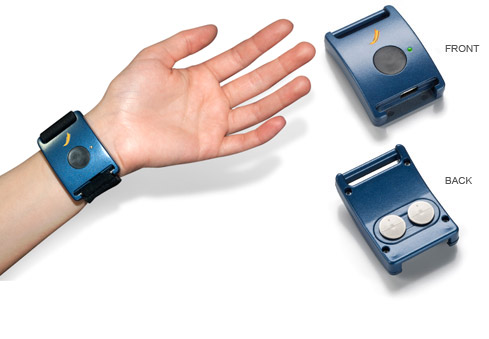
Q Sensor Curve is designed to wear on the wrist, so it is comfortable and unobtrusive to wear all day at work, play, or sleep. This makes it ideal for long-term measurement in clinical and therapeutic research. (Credit: Affectiva)
Researchers have shown they can use technologies to measure your emotional state of mind for market research, educational, and medical purposes. The technology could ultimately become part of a larger set of tracking tools that will help companies tailor products and services more precisely to people they’re targeting. ... read more
Source: MIT Media Lab, Effectiva
'Brain Drain' or 'Brain Exchange': What Is the Cost When Immigrant Entrepreneurs Go Home?
For a majority of highly skilled immigrants who want to start companies today, the promised land is no longer the United States, according to a recent report from the Kauffman Foundation. Some experts say the flow of immigrants back home to countries like India and China is a "brain drain" that robs the U.S. of new jobs and companies, and requires an immigration policy overhaul. Others see the flow as more of a "brain circulation" that benefits economies on both sides of the sea.

Wadhwa, a senior research associate at Harvard Law School and director of research at Duke's Center for Entrepreneurship and Research Commercialization, falls on the "brain drain" end of the spectrum. "It's not a brain drain; it's a brain hemorrhage," he insists. He sees the flow as a policy problem, the result of a visa system that broke down after 9/11 and the dot-com bust, stymying more than half a million skilled immigrants. Would-be entrepreneurs now wait years in "green card limbo," stuck in jobs tied to H-1B visas that allow neither transfer nor promotion, Wadhwa notes. "Not only can you not start a company, but you are stagnant in your career."
It's a world away from three decades ago, when Wadhwa immigrated from India. "It took me 18 months to get a green card," he recalls. He started his first company 15 years later -- and wasn't alone. In fact, one out of every four technology and engineering companies launched between 1995 and 2005 had at least one immigrant founder, Wadhwa discovered in a nationwide survey of more than 2,000 companies in 2007. In Silicon Valley, the number was 52%. More...
Source: Knowledge@Wharton
A "paper" smartphone? Welcome to the future
Smartphones, laptops, and tablets will soon be as thin and flexible as a piece of paper. This is not science fiction. It’s already happening.
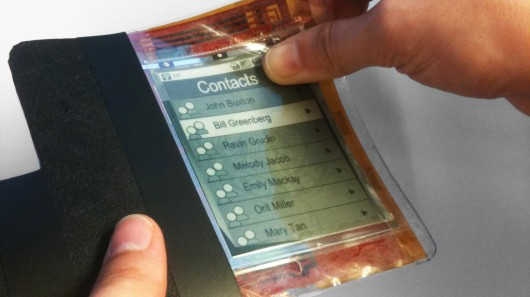
According to Gizmag.com: “Researchers from the Human Media Lab at Canada’s Queen’s University have created a fully-functioning floppy smartphone [that they call a] Paperphone. The Paperphone can do things like making and receiving calls, storing e-books, and playing music. [It] conforms to the shape of its user’s pocket or purse, and can even be operated through bending actions.”
“This computer looks, feels and operates like a small sheet of interactive paper,” said its creator, Roel Vertegaal, who is also the director of the Human Media Lab. “You interact with it by bending it into a cell phone, flipping the corner to turn pages, or writing on it with a pen.”
In just a few short years (perhaps sooner) computers like the MacBook Air will seem like boat anchors…the iPad will feel like a cast-iron frying pan…and you’ll be able to carry your smartphone like a dollar bill in your wallet. It’s all right around the corner.
Source: Eric Knight
Over 4,000 books now available as free PDF downloads
All PDF versions of books published by the National Academies Press are now downloadable to anyone free of charge.
![]() Makes All PDF Books Free to Download;
Makes All PDF Books Free to Download;
More Than 4,000 Titles Now Available Free to All Readers
This includes a current catalog of more than 4,000 books plus future reports produced by the Press. The mission of the National Academies Press (NAP) — publisher for the National Academy of Sciences, National Academy of Engineering, Institute of Medicine, and National Research Council — is to disseminate the institutions’ content as widely as possible while maintaining financial sustainability. To that end, NAP began offering free content online in 1994.
Printed books will continue to be available for purchase through the NAP website and traditional channels. The free PDFs are available exclusively from NAP’s website, and remain subject to copyright laws.
Source: The National Academies Press
Google, Microsoft, and Yahoo Team Up to Advance Semantic Web
Google, Microsoft, and Yahoo have teamed up to encourage Web page operators to make the meaning of their pages understandable to search engines.
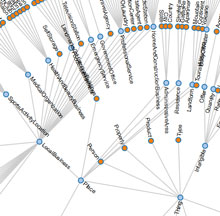
Web of words: This graph of linked phrases lets software understand the meaning of online content. The system is backed by Google, Microsoft and Yahoo.
Credit: Dan Brickley
The three big Web companies launched the semantic-Web-technology initiative, known as Schema.org, last week. It defines an interconnected vocabulary of terms that can be added to the HTML markup of a Web page to communicate the meaning of concepts on the page. This data will allow search engines to better understand how useful a page may be for a given search query.
Schema.org asks for semantic markup to be written using a format known as microdata, which is not yet a W3C standard, rather than RDFa, a more widely used W3C-approved alternative.
Source: Technology Review
How Tiny Whims Reveal Your Deepest Self
We've all got the vague notion that our little preferences say something about us. For example, you might assume that someone who wears only tight clothing is both a little vain and maybe fast. But take that one step further: Could you use that to surmise their dominant hand or how many hours they sleep at night?
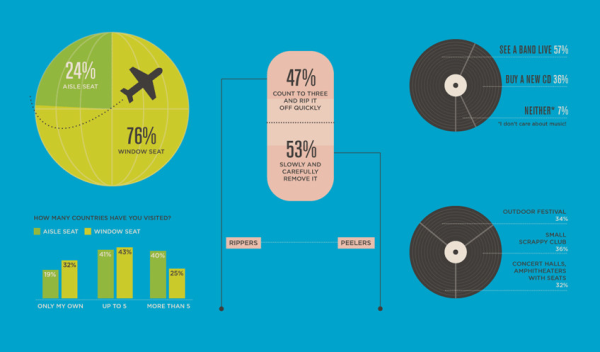
Hunch has used their massive database to correlate millions of personal preferences, and dropped them into this astonishing infographic. For instance, if you don't support the death penalty, you're more likely to have never cheated on a test; if you prefer to squash a bug you see on the ground rather than shoosh it away, you're probably a dog person. See More
Source: Co.Design
Search by Image - a new form of search
Google has introduced Search by Image, a new form of search that lets you upload an image to find similar images. For instance, you can upload vacation photos of monuments you don’t recall the names of, and images of that same monument appear in search results, along with its name.
You can search by image in three ways: drag the image into the Google images search box, upload the image, or paste a URL of the image. Search by Image browser extensions for Chrome and Firefox are also available.
Google will also begin caching web pages that it predicts users will click, saving two to five seconds in most searches.
Killer Question: What do we want to do differently?
Source: Google
The world's first three-dimensional plasmon rulers
The 3-D plasmon ruler is constructed from five gold nanorods in which one nanorod (red) is placed perpendicular between two pairs of parallel nanorods (yellow and green).
Paul Alivisatos of the Lawrence Berkeley National Laboratory and colleagues have designed a first-of-its-kind ruler capable of measuring the configuration and movement of macromolecules, such as DNA.
The researchers constructed an “H”-shaped device out of five gold nanorods, the length and position of each of which could be controlled. They then looked for changes in spectra associated with plasmon coupling — the tendency for waves of free electrons associated with metallic nanoparticles to interact with each other.
As a molecule pushes or pulls pieces of the device, plasmons in the rods interact in distinct ways. By measuring the light scattered by the plasmon interactions, the researchers were able to deduce how the ruler, and anything attached to it, moves, in three dimensions.
The researchers say the rulers could be used to study protein folding and how DNA molecules interact with enzymes.
Killer Question: How do we more strongly incorporate innovation / creative problem solving into our day to day work?
Source: U.S. Department of Energy (DOE)’s Lawrence Berkeley National Laboratory (Berkeley Lab)
Coming to TV screens of the future: Smell-O-Vision
Researchers at UC San Diego and the Samsung Advanced Institute of Technology (SAIT) in Korea have demonstrated that it is possible to generate thousands of odors with a device small enough to fit on the back of your television.
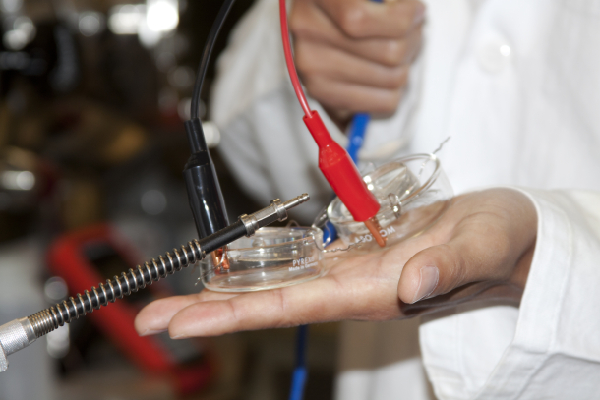
This could make real “Smell-O-Vision” possible. “Smell-O-Vision” was a film technique that released smells during films, used for only one movie, The Smell of Mystery, released in 1960.
“For example, if people are eating pizza, the viewer smells pizza coming from a TV or cell phone,” said Sungho Jin, professor in the departments of Mechanical and Aerospace Engineering and NanoEngineering at the UC San Diego Jacobs School of Engineering. “And if a beautiful lady walks by, they smell perfume. Instantaneously generated fragrances or odors would match the scene shown on a TV or cell phone.”
The researchers found that it is possible to create a compact device which heats a small metal wire to vaporize an aqueous solution, such as ammonia or rose oil, releasing smells from a small chamber. The chamber is made of a non-toxic, non-flammable silicon elastomer.
The system uses 200 controllers to selectively activate as many as 10,000 odors. That pretty much covers the number of odors humans can distinguish, the researchers said.
Killer Question: How do we give recognition to people/teams with new fresh ideas?
Source: University of California - San Diego
Role of HR in Innovation
Innovation is the catch word for our generation. Everywhere we look at, we find innovation. There was a time in history when invention was innovation. At the brink of inventing all, innovation is invention. The bottle of beverage is redefining its shape. Every communication device is undergoing metamorphosis. 2G to 3G, rectangular to modular technologies, the world is experiencing change through break neck innovation.
We wonder about the soul of innovation! Is it a collective mind frame which innovates? Do innovation leads to more innovation? Or there is an innovator behind every innovation?

Innovation is definitely a social mind frame. If not initiated participated by all. Whenever something new hits the town and if dubbed happening by a group of people, like a shoal of fish, we run after it to part of the experience. That means innovation is started by an innovator and followed by the masses. Innovation leads to further innovation! That is true but there has to be some innovator to start this chain reaction. Thus innovation is all about the innovator.
Innovator is no one but someone among you and me. It is the human brain which innovates. Finding such brains is the real job of our HR Dept. A successful HR professional is always an innovator who identifies the resource who can do trendsetting innovation.
Unfortunately the industry is swarmed by unsuccessful HR techniques which fail to identify the real innovator. What is the relevance of totemistic queries like, “How experienced you are? And tell us about yourself? How about your achievements and breakthroughs? Who are your clients?” And all statistical queries far removed from finding the real innovator with innovation mind. We are not proposing these queries are irrelevant at the time of selecting candidates however we are questioning its relevance in terms of the context of innovation.
An ideal HR professional shouldn’t be task master or recruitment software. Beyond the plastic smile he/she should have a sensibility to understand the processes one practice to understand and implement business techniques. One should delve in detail to understand the outlook of an interviewee when it comes to innovation.
However no HR is born with these skills. An integrated HR innovation package can help them tremendously in recruiting innovative personnel in the managerial wire frame of an organization.

